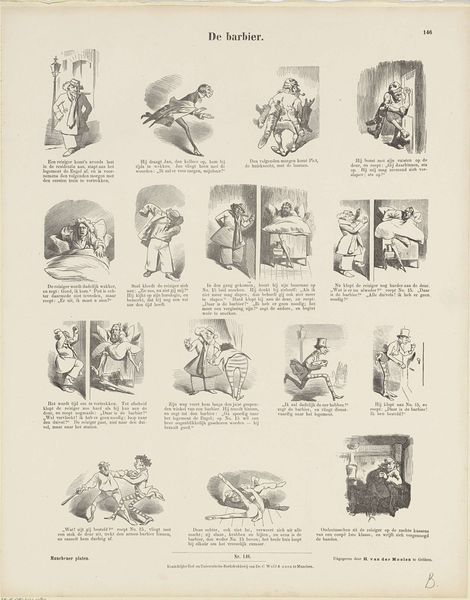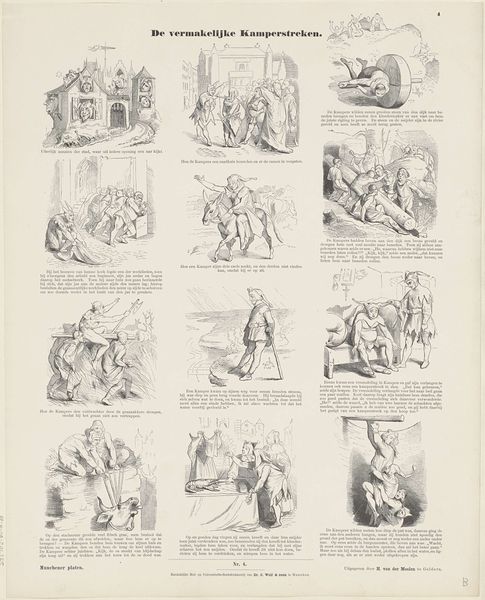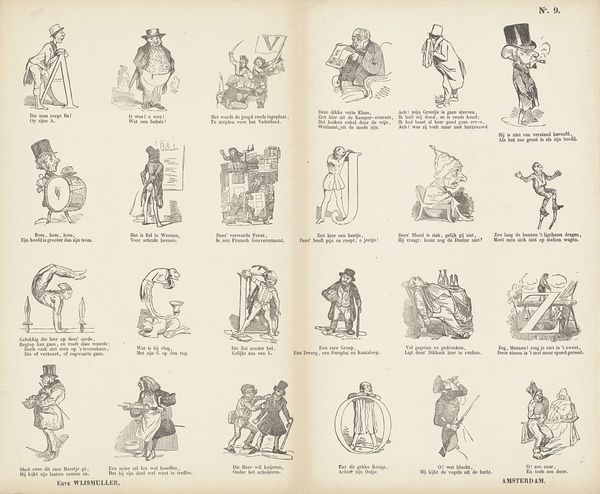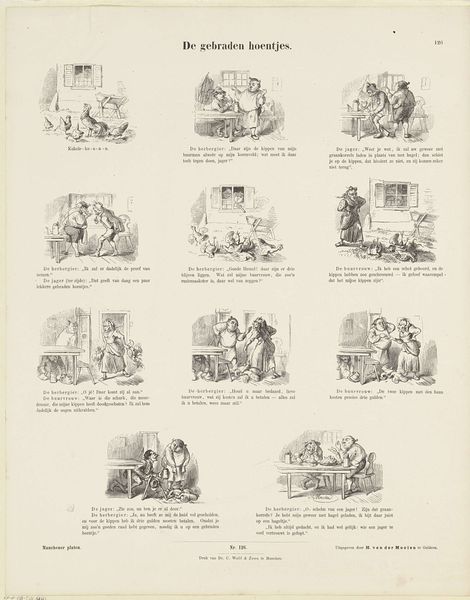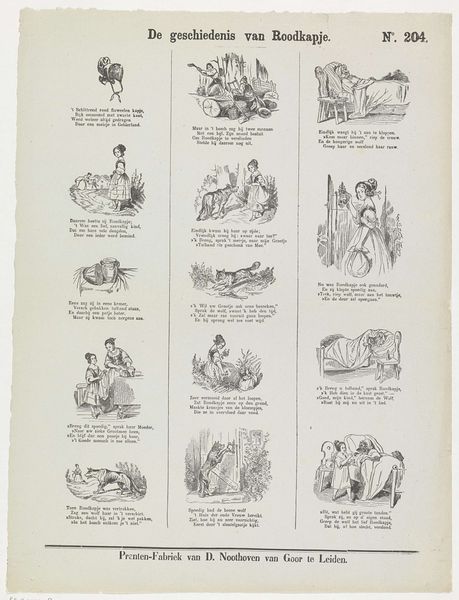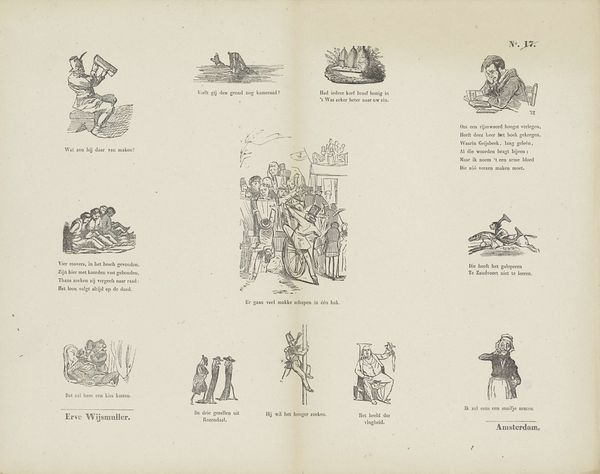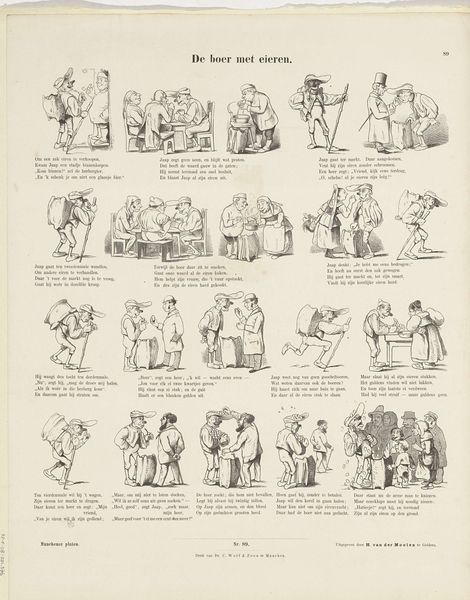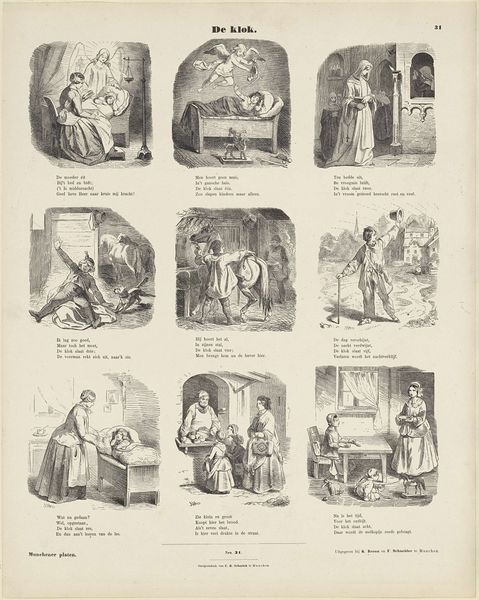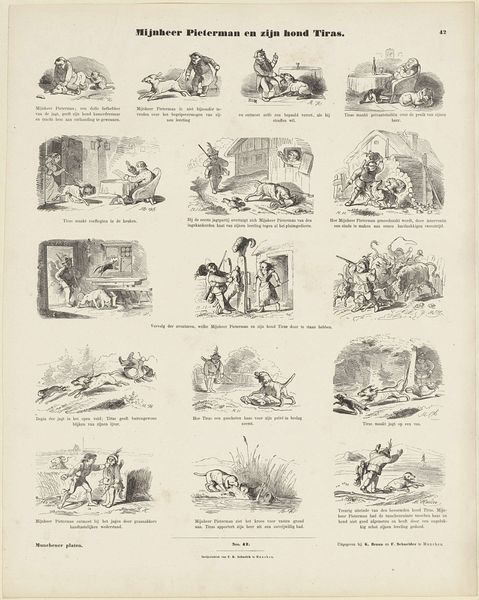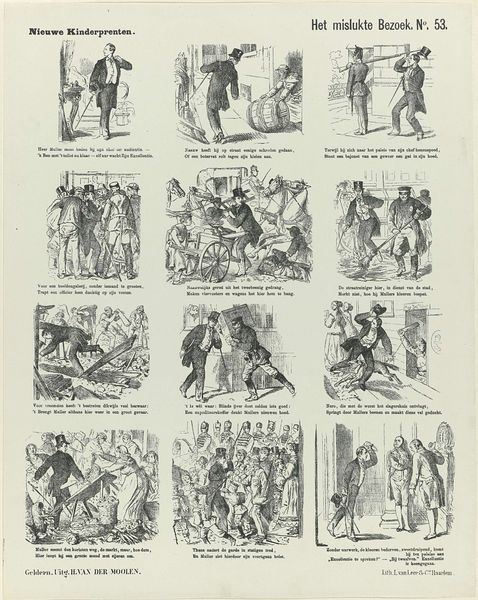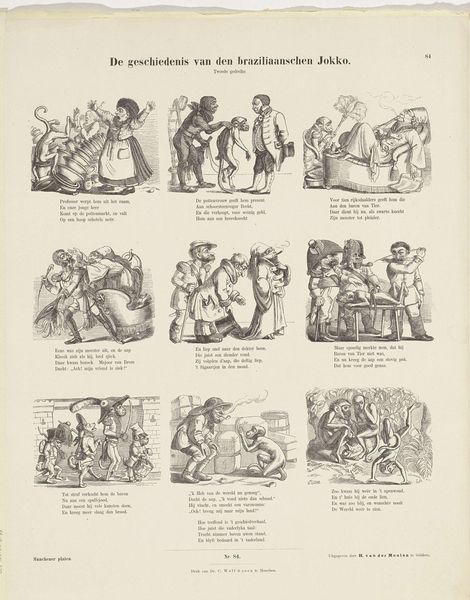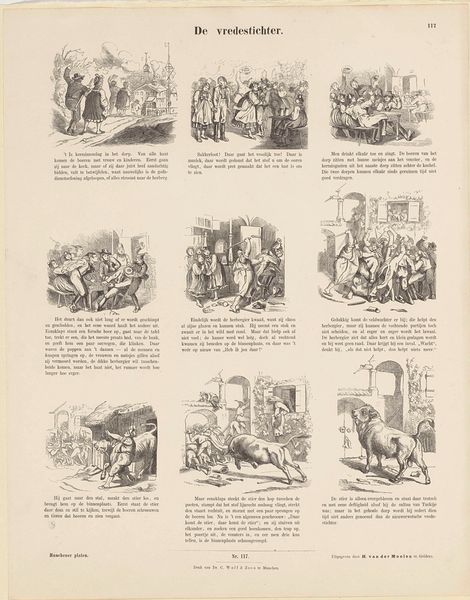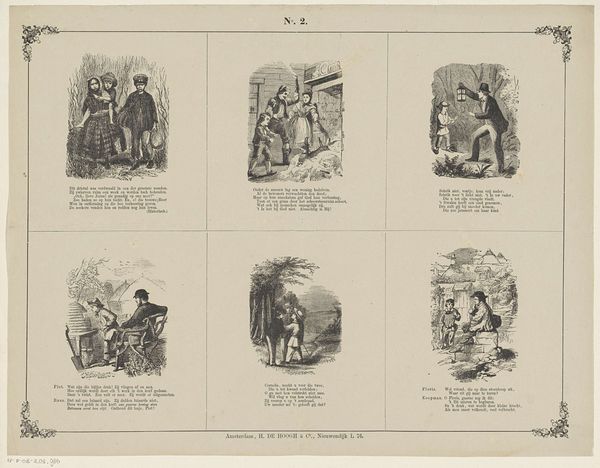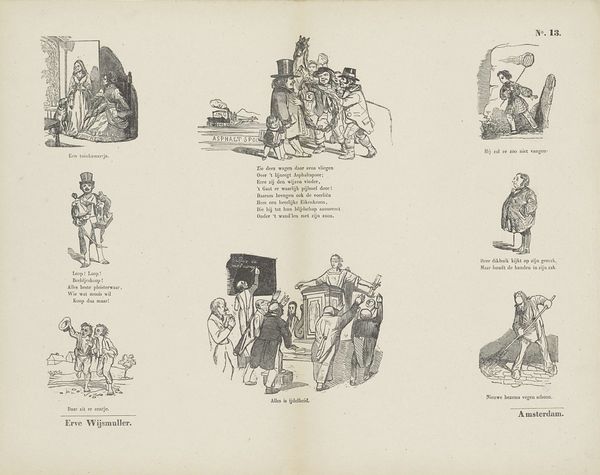
graphic-art, print, etching, engraving
#
graphic-art
#
narrative-art
# print
#
etching
#
caricature
#
comic
#
genre-painting
#
engraving
Dimensions: height 444 mm, width 350 mm
Copyright: Rijks Museum: Open Domain
Editor: This etching, "De harde noot," or "The Hard Nut," by F. Steub, from around 1843 to 1920, presents as a series of vignettes, almost like a comic strip of its time. The scenes seem to depict escalating financial distress. What do you see in this work from a historical point of view? Curator: These images offer a glimpse into socio-economic anxieties that might have been pervasive in the 19th century. The title, "The Hard Nut," refers to a difficult problem, a knotty issue—likely financial hardship. It's fascinating how the artist uses caricature and comic scenes to address what was likely a very serious concern for many. Do you see any clues to what kind of 'hard nut' is being referenced? Editor: I notice a progression – in one panel, a figure looks despairingly at an empty bottle. Others seem to show domestic squabbles, perhaps related to money issues? And there is a locked chest and someone embracing a wall… Is that accurate? Curator: Exactly. The imagery of the empty bottle, marital conflict, the locked chest hinting at inaccessible funds, and the embrace of the wall suggesting utter despair are strong indicators. Steub is speaking to anxieties about poverty, perhaps the precariousness of middle-class existence. This was a time of industrial change and economic upheaval; images like this may have served as both commentary and perhaps a kind of cautionary tale, made palatable through caricature. How might its place within public print culture impacted its reach? Editor: Since it was an etching meant to be printed, I imagine it had wide circulation through newspapers or popular periodicals. That would give it broad cultural influence at a time of growing literacy. Curator: Precisely! Its availability and satirical nature potentially fueled social discourse about the distribution of wealth and personal responsibility during economic struggles. It reminds us that art wasn't always confined to galleries; sometimes its strongest impact was in shaping public sentiment. Editor: I never really thought about social commentary playing out in printed comic form back then. Curator: This reminds us that art can shape perceptions of economic issues even through seemingly light-hearted formats.
Comments
No comments
Be the first to comment and join the conversation on the ultimate creative platform.
